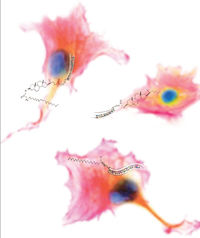Biopharma Research and Development Facing Productivity Gap
Five key areas for intervention identified for success in the current environment in a new report by The Boston Consulting Group
Advertisement
Flat output from research and development (R&D) labs, despite increased spending, will put pressure on revenue growth in the biopharma sector, according to a report from The Boston Consulting Group (BCG), Rising to the Productivity Challenge: A Strategic Framework for Biopharma.
Revenue growth in the 1990s came primarily from an increase in the number of blockbuster drugs produced. Interestingly, revenue per blockbuster did not increase, on average, once the effect of inflation is removed. Now that patent expirations are increasing, the stock of blockbuster drugs is approaching equilibrium and the industry is threatened with the loss its main engine of growth.
Another key finding is that while small biopharma companies account for less than 10 percent of market capitalization and R&D spending in relation to their larger brethren, small biopharma accounts for two-thirds of the industry's clinical pipeline. This finding raises interesting questions about where innovation occurs most readily and sets the stage for even more intensive business relationships as larger companies seek to tap into this source of innovation.
But in this uncertain time, the report argues, there are specific ways to identify problems and actions that can lead to successful remedies. "Productivity is a derivative of three factors: value per drug, drug development efficiency, and the cost of failure," said BCG vice president Peter Tollman, one of the report's authors. "Our interventions aim to address these levers for improved performance."
The BCG report identifies five areas where companies can intervene to influence the productivity of new drug discovery: front-end innovation; strategies for using external sources (licensing from third-party companies); reworking the R&D engine by making improvements in such fundamental areas as site selection and outsourcing to low-cost countries; a hard look at the political and regulatory environment, and, finally, a rigorously honest look at the people, culture, and governance of the organization. This framework provides a road map to determine where and when to intervene and what type of intervention is needed to close the productivity gap.
Two companion reports, The Gentle Art of Licensing and Good Governance Gives Good Value, are being released in conjunction with BCG's broader productivity study. These reports analyze in greater depth individual prescriptive measures outlined in the framework above. Future publications will cover the R&D engine, people and culture, and front-end innovation.
Copies of Rising to the Productivity Challenge: A Strategic Framework for Biopharma and the two companion publications.























































